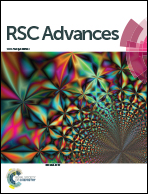Experimental investigation on strength development of lime stabilized loess
Abstract
Lime stabilization has been widely used in pavement subbases and ground improvement, but the investigation of the mechanical properties and the microstructure of lime stabilized loess is still insufficient. In this study, the effects of lime content, porosity and curing time on the strength development of lime stabilized loess were investigated through a series of unconfined compression tests. The microstructure of lime stabilized loess with different curing time was also investigated by scanning electron microscopy (SEM). Experimental results revealed that the curing time had a significant effect on the unconfined compressive strength (UCS) of lime stabilized loess. For a curing time of no more than 7 days, the influence of lime content on the UCS of stabilized loess was not very obvious. A lime content of around 16% led to the maximum UCS within the range of lime content investigated. However, for longer curing periods (like 28 and 90 days), the UCS of stabilized loess tends to increase with the lime content. For constant lime content, the UCS of stabilized loess decreased almost linearly with the increase of porosity. Correlation of UCS with lime content, porosity and curing time was also developed. In addition, the variations in microstructure are analyzed to reveal the strength development mechanism of lime stabilized soil.



 Please wait while we load your content...
Please wait while we load your content...